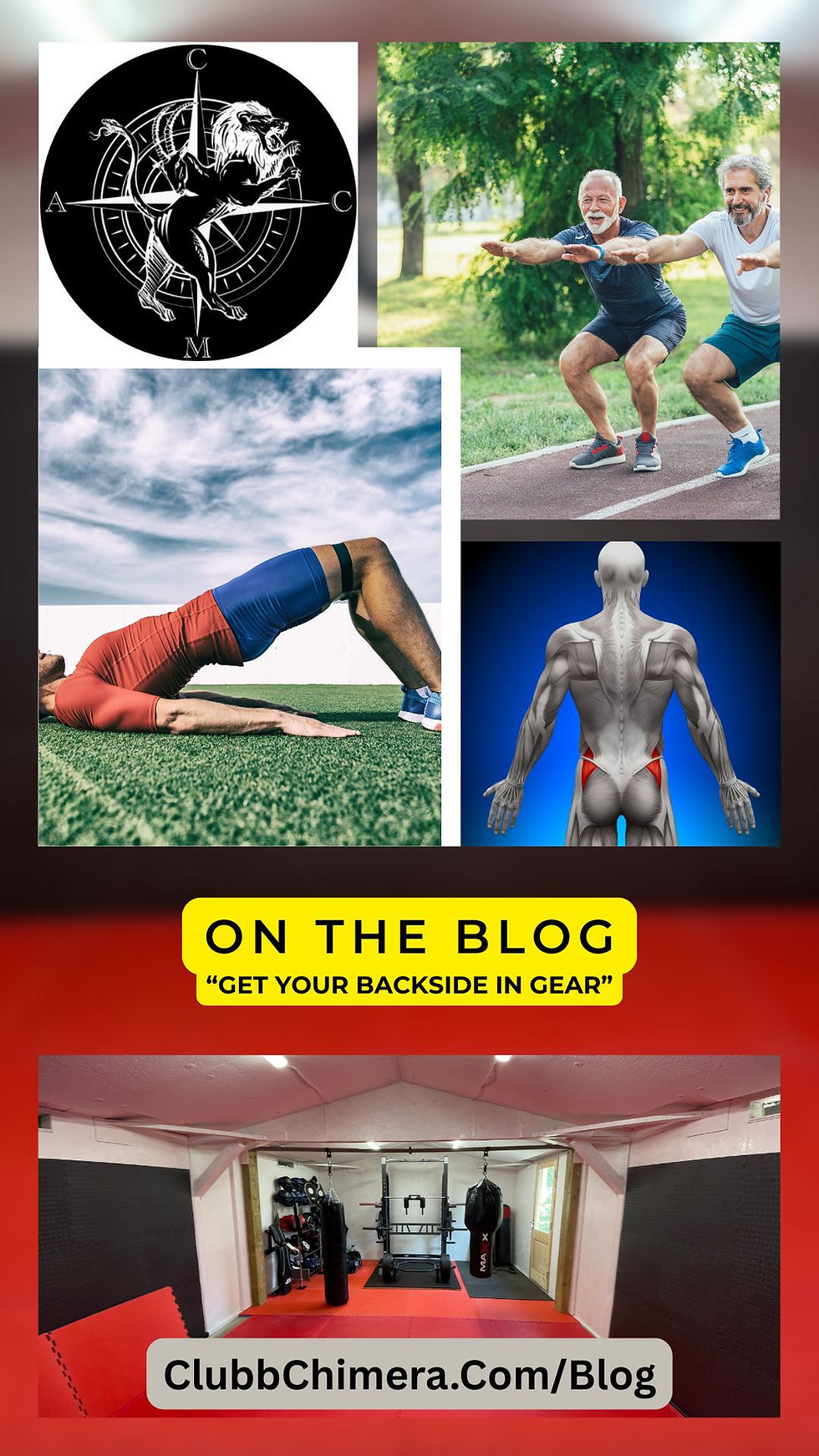Get your backside in gear!
- jamie03066
- Jun 24
- 2 min read

23.06.2025
As my senior client starts his fourth course with me we kicked training off some some strength and conditioning. We began with assessing his progress on pull-ups. His routine includes scap-pulls, iso-hold/negative rep combinations and neutral grip partials. He usually finishes off with some reverse rows (aka Australian pull-ups), but a week of manual labour wasn't being kind to his so I decided to move onto our main routine.
Today was squat day, which was a great opportunity to progress with hip mobility and also more active glute engagement. It seems the glutes are still one of the most overlooked areas of training, at least in terms of their use in basic movements. Firing the glutes properly is one of the key factors to maintaining a good posture as well driving lower body strength. Unlike many who live in Asia and Africa, squatting is not a regular resting position for most people in living in the western world. Chairs promote bad posture and one of the main reason for this being that they appear cancel out glute activation. This can overspill into our standing, walking and lifting activities through the day, where we overuse our backs.
Following some dynamic stretching and muscle activation exercises, our main workout began with goblet squats. This exercise is really beginning to open up my client's hips and improving his squatting form. We then moved onto our main exercise: back squats on the safety bar. This consisted of 5 x 10 reps. Although it is important that we focus on developing functional strength and improving joint stability, hypertrophy training is a great way to combat age-related muscular wastage. After this exercise we decided to change exercises from the more challenging Bulgarian split-squats to glute-raises. My reasoning for this is that my client needs a bit more mobility/flexibility training to get the best results from the split squats. We will do balance related exercises, but this one is not currently the best option for him. Therefore, we switched to glute bridges to keep our attention on activating these muscles properly.
If trained mindfully, the glue bridge is an excellent exercise. I have found it to be very useful to train around certain injuries whilst targeting such a large and yet often neglected muscle group. However, the main thing that needs to be confirmed early on in this exercise is to not bridge using our lower backs. There is a lot of advice out there, many of which will suit different people, where certain tweaks can be made to ensure the glutes are firing on the lift and not the lower spine, however, I found the simple pilates method "unravelling the vertebrae" by flattening the back into the floor is a great way to get to the glutes. Only when you feel that the glutes are in engaged and your entire core is stiff do you then drive up with the bridge. We completed three sets of this exercise, adding light weights in the second and final sets. You can, of course, do an entire routine focused on glute bridging.
The lesson finished with a tabata burnout on the heavy bag. These 20 second rounds with 10 second rests for a total of four minutes alternated between speed and strength.













Comments